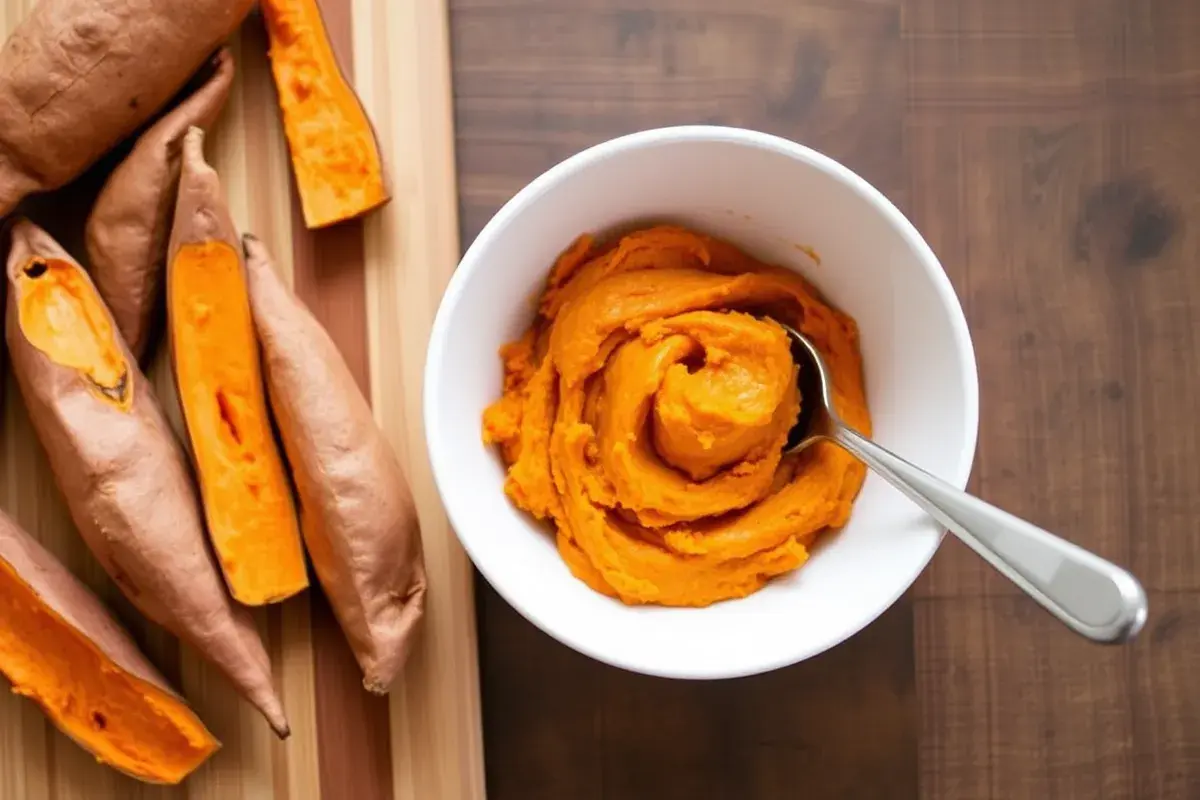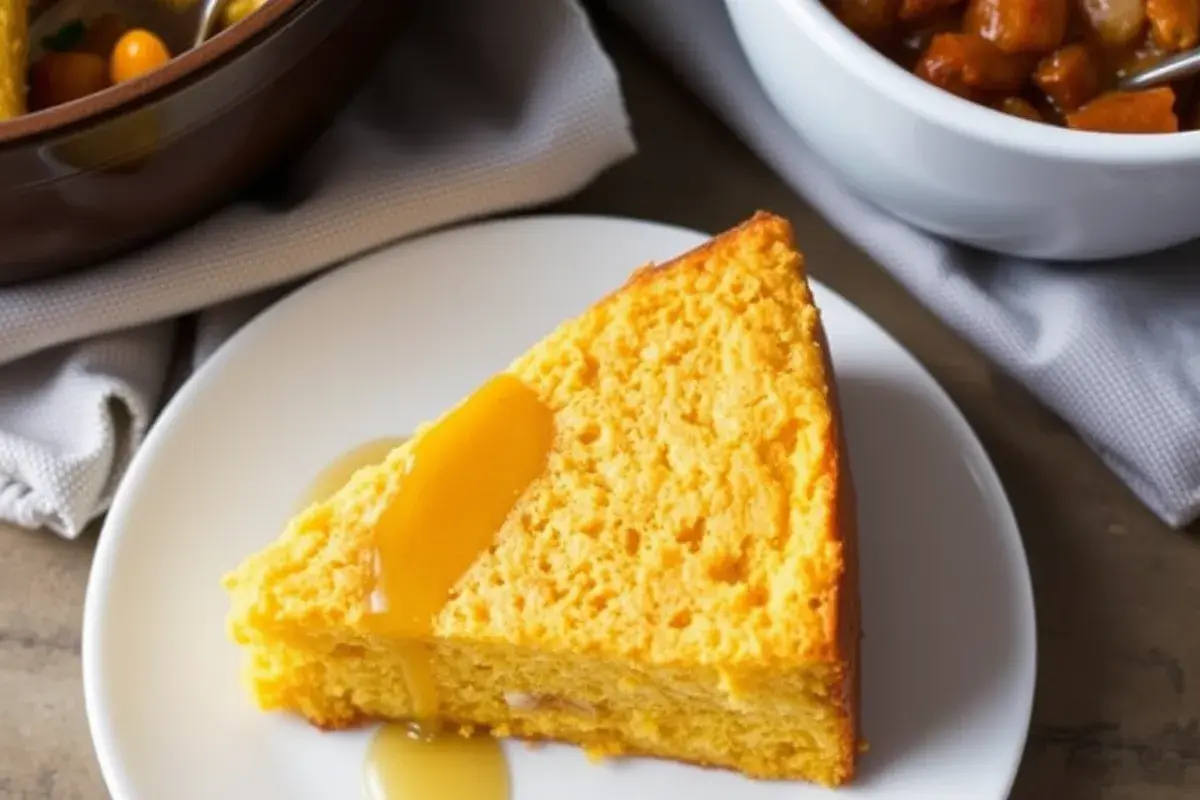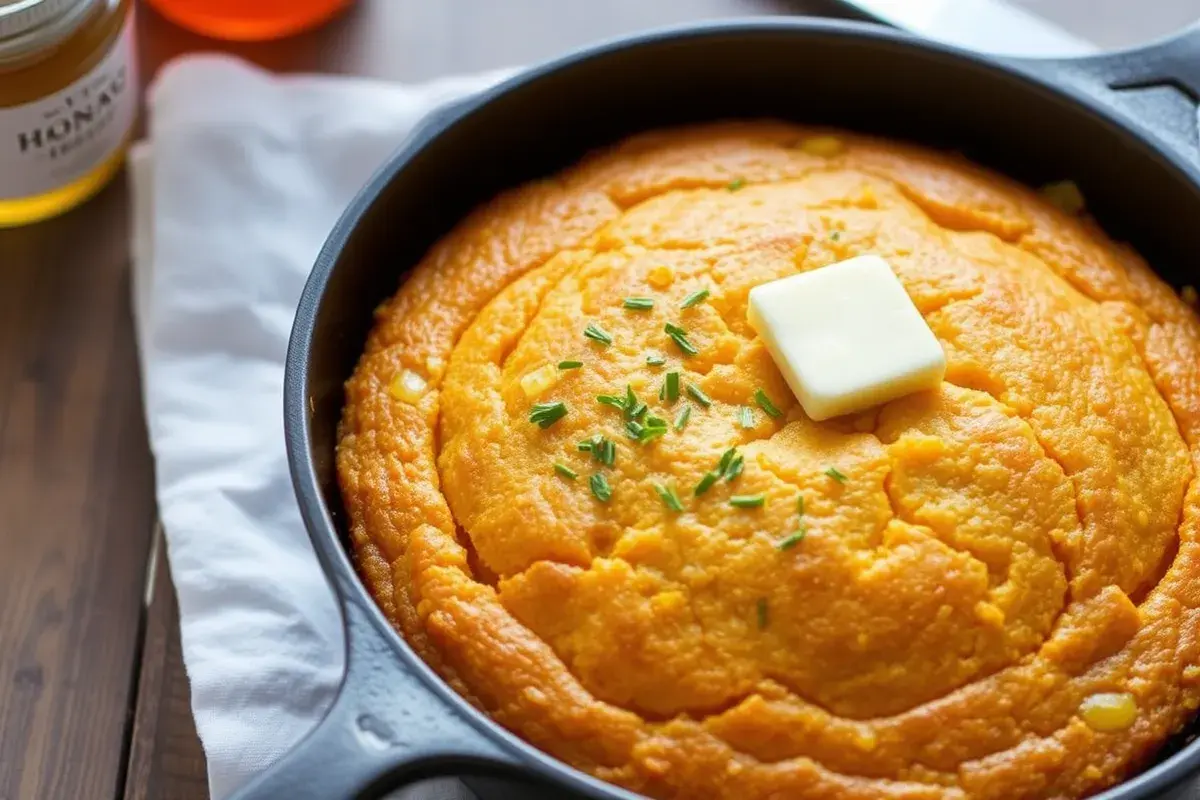Are you searching for a way to spice up your traditional cornbread? Sweet potato cornbread might just be the answer. This delightful variation adds a moist texture and a hint of sweetness that transforms the classic dish into something extraordinary. In this article, we’ll explore how to make sweet potato cornbread from scratch, tips for perfecting the recipe, and why incorporating sweet potatoes can transform your baking. We will also provide some interesting variations, serving suggestions, and ideas to make this dish your own. Whether you’re a seasoned baker or just starting out, sweet potato cornbread is a versatile and tasty addition to any meal.
Sweet potato cornbread has a unique combination of flavors that appeals to many palates. The natural sweetness from the sweet potatoes, combined with the slight earthiness of the cornmeal, creates a well-balanced flavor profile that makes it stand out from the traditional version. Additionally, it is a crowd-pleaser that can be enjoyed on any occasion, from casual family dinners to festive holiday gatherings. The vibrant orange color of the sweet potatoes also adds visual appeal, making it a beautiful dish to present at the dinner table.
1. Why You Should Choose Sweet Potato Cornbread?
Sweet potatoes bring a natural sweetness and moistness that regular cornbread often lacks. Moreover, they are packed with nutrients like vitamin A, vitamin C, potassium, and fiber. Adding sweet potatoes not only improves the flavor but also boosts the nutritional value of your cornbread, making it a healthier option for both adults and children alike. Sweet potatoes are also rich in antioxidants, which can help protect your body from harmful free radicals, promoting overall health and wellness.
Sweet potatoes are a great source of complex carbohydrates, which provide a steady release of energy without causing blood sugar spikes. This makes sweet potato cornbread a more balanced side dish that can keep you full longer compared to traditional cornbread made with refined flour and sugar. Sweet potatoes also contain beta-carotene, which is converted into vitamin A in the body and plays a crucial role in maintaining good vision, healthy skin, and a strong immune system.
1.1 Health Benefits of Sweet Potatoes in Cornbread
In addition to their sweet flavor, sweet potatoes add moisture and a tender crumb to baked goods. They help reduce the need for additional fats or sugars in your recipe. Sweet potatoes are a versatile ingredient used in various desserts and breads. Their high fiber content also contributes to a feeling of fullness, making your baked goods more satisfying and helping to prevent overeating. Furthermore, sweet potatoes are gluten-free, making them an excellent option for those who are gluten intolerant or simply trying to reduce gluten in their diet.
Sweet potatoes bring a subtle earthiness to baked goods, enhancing the depth of flavors without overpowering other ingredients. They act as a natural emulsifier, helping to create a smoother batter and a more even bake. This makes them an excellent addition to many different recipes beyond cornbread, such as muffins, pancakes, and quick breads. Plus, because sweet potatoes are relatively low in calories and fat, incorporating them into your baking allows you to enjoy indulgent treats without too much guilt.
Understanding how to properly prepare sweet potatoes for baking can make a significant difference in your results. Baking sweet potatoes until they are soft and caramelized enhances their natural sweetness and makes them easier to mash. Roasting also helps concentrate their flavors, adding an extra layer of complexity to your cornbread.
2. Ingredients You’ll Need for Sweet Potato Cornbread

To make the perfect sweet potato cornbread, gather the following ingredients:
- 1 cup of cornmeal
- 1 cup of all-purpose flour
- 1 tablespoon of baking powder
- 1/2 teaspoon of baking soda
- 1/2 teaspoon of salt
- 1 teaspoon of cinnamon (optional)
- 1 cup of mashed sweet potatoes (about one medium sweet potato)
- 1/2 cup of brown sugar
- 2 large eggs
- 1 cup of buttermilk
- 1/4 cup of melted butter
- 1 teaspoon of vanilla extract
2.1 Optional Add-ins for Sweet Potato Cornbread
- Honey for extra sweetness
- Chopped nuts like pecans or walnuts for added crunch
- Dried fruits such as cranberries or raisins
- Grated orange zest for a citrusy twist
- Chopped fresh herbs like rosemary or thyme for a savory variation
- Shredded coconut for a tropical flavor
- Crumbled bacon for a sweet and savory combination
3. How to Make Sweet Potato Cornbread: Step-by-Step Instructions
3.1 Preparing Sweet Potatoes for Cornbread
- Preheat your oven to 400°F (200°C).
- Wash and prick the sweet potato with a fork.
- Bake the sweet potato for about 45 minutes or until tender. Baking the sweet potato enhances its natural sweetness and makes it easier to incorporate into the batter. Roasting the sweet potatoes can also add a caramelized flavor that deepens the overall taste of the cornbread.
- Let it cool, then peel and mash until smooth. Make sure there are no lumps to ensure a consistent texture in your cornbread. If you prefer a creamier consistency, you can blend the sweet potatoes with a hand mixer.
3.2 Making the Sweet Potato Cornbread Batter
- Lower the oven temperature to 375°F (190°C).
- Grease a 9-inch square baking pan or cast-iron skillet. Using a cast-iron skillet will give your cornbread a nice crispy edge, which contrasts beautifully with the soft interior. If you like your cornbread extra crispy, heat the skillet in the oven before pouring in the batter.
- In a large bowl, combine cornmeal, flour, baking powder, baking soda, salt, and cinnamon. Whisking these dry ingredients together helps to distribute the leavening agents evenly, ensuring the cornbread rises uniformly.
- In a separate bowl, mix mashed sweet potatoes, brown sugar, eggs, buttermilk, melted butter, and vanilla extract. The melted butter adds richness, while the vanilla extract enhances the sweetness of the sweet potatoes. For an extra layer of flavor, consider adding a tablespoon of maple syrup or honey.
- Gradually add the wet ingredients to the dry ingredients, stirring until just combined. Be careful not to overmix, as this can result in a dense cornbread. The key is to fold the ingredients together until they are just moistened.
- Fold in any optional add-ins if using. This is where you can get creative and add your personal touch to the recipe. For example, chopped nuts add a delightful crunch, while dried fruits contribute extra bursts of sweetness.
3.3 Baking Sweet Potato Cornbread
- Pour the batter into the prepared baking pan. Make sure to spread it evenly for a consistent bake. You can also sprinkle a handful of chopped nuts or a little sugar on top for added texture and flavor.
- Bake for 25-30 minutes or until a toothpick inserted into the center comes out clean. The top should be golden brown, and the edges should start to pull away from the sides of the pan. If you want a slightly caramelized top, you can brush a bit of honey or melted butter over the cornbread halfway through baking.
- Allow the cornbread to cool slightly before serving. Letting it cool will help it set and make it easier to cut into slices without crumbling. For the best flavor, serve it warm with a pat of butter or a drizzle of honey.
4. Tips for the Best Sweet Potato Cornbread
- Don’t overmix the batter to avoid a tough texture. Overmixing can develop too much gluten, resulting in a chewy rather than tender cornbread.
- Use fresh sweet potatoes for the best flavor. Fresh sweet potatoes have a better texture and sweetness compared to canned. Roasting the sweet potatoes enhances their natural sweetness even more.
- Buttermilk adds tanginess and tenderness; if unavailable, substitute with regular milk and a tablespoon of vinegar. This homemade substitute will mimic the acidity of buttermilk, helping the cornbread rise properly.
- Room temperature ingredients: Ensure that your eggs and buttermilk are at room temperature. This helps them incorporate better into the batter, leading to a smoother consistency.
- Add a sprinkle of sugar on top before baking for a slightly caramelized crust that adds a delightful crunch. For a savory twist, sprinkle sea salt or smoked paprika on top before baking.
- Preheat the skillet: If using a cast-iron skillet, preheat it in the oven before adding the batter. This will give you a nice crispy crust that contrasts perfectly with the soft interior.
5. Serving Suggestions for Sweet Potato Cornbread

Sweet potato cornbread pairs wonderfully with:
- Chili or stews: The sweetness of the cornbread complements the spicy, savory flavors of chili or stew.
- Barbecue dishes: The smoky, rich flavors of barbecue are perfectly balanced by the sweetness of the cornbread. Try serving it with pulled pork, ribs, or smoked chicken.
- Salads for a light meal: Serve alongside a green salad for a lighter, yet satisfying meal. The cornbread’s sweetness pairs well with tangy vinaigrettes.
- Maple butter: Spread a little maple butter on warm cornbread for an extra special treat. You can make maple butter by whipping softened butter with a few tablespoons of maple syrup.
- Gravy: For a savory twist, serve it with a hearty gravy, especially during holiday meals. Sweet potato cornbread is a great addition to a Thanksgiving or Christmas dinner table.
- Fried chicken: The classic combination of fried chicken and cornbread gets even better with the addition of sweet potatoes. The sweetness of the cornbread helps balance the richness of the fried chicken.
5.1 Storing Sweet Potato Cornbread for Freshness
- Refrigerate in an airtight container for up to 5 days. To keep the cornbread moist, wrap it tightly in plastic wrap before placing it in the container.
- Freeze for up to 3 months; thaw at room temperature before reheating. To reheat, wrap the cornbread in aluminum foil and warm it in the oven at 350°F (175°C) for about 10 minutes. For a quick reheat, you can also microwave individual slices for 20-30 seconds.
- Refresh the cornbread by brushing it with a little melted butter before reheating to bring back some of its original moisture and flavor.
6. Frequently Asked Questions
6.1 What is the difference between southern cornbread and sweet cornbread?
Southern cornbread typically has a savory flavor and is less sweet, often made without sugar. In contrast, sweet cornbread includes sugar or sweet ingredients like honey or sweet potatoes, resulting in a sweeter taste and cake-like texture. Southern cornbread also tends to be more crumbly, while sweet potato cornbread has a moist and tender consistency due to the added sweet potatoes. Southern cornbread is often cooked in a cast-iron skillet, which gives it a crispy crust, whereas sweet cornbread can be made in either a skillet or a baking pan.
6.2 Why use sweet potatoes in baking?
Sweet potatoes add natural sweetness and moisture to baked goods. They also provide nutritional benefits, such as vitamins and fiber, enhancing the overall healthiness of the recipe. Additionally, sweet potatoes act as a natural binding agent, which helps improve the texture and structure of baked goods. Their vibrant color also adds visual appeal to your dish. Using sweet potatoes can also reduce the amount of refined sugar and fat needed in a recipe, making baked goods healthier without compromising on flavor.
6.3 What makes cornbread not fall apart?
The key to preventing cornbread from crumbling is the right balance of moisture and binding agents. Ingredients like eggs and buttermilk help bind the cornbread together, while adding sweet potatoes increases moisture, reducing dryness and crumbliness. Another important tip is to avoid overbaking, as this can dry out the cornbread and make it more likely to fall apart. Using a bit


